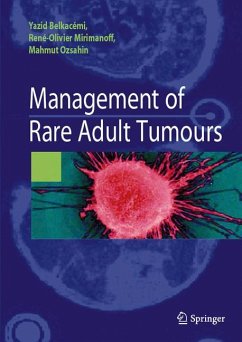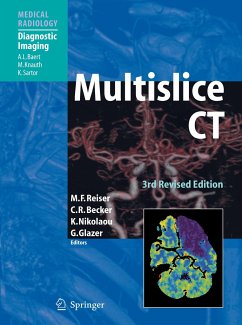
Radiation Oncology Advances

PAYBACK Punkte
57 °P sammeln!
from combining radiation with a molecular targeted agent - namely cetuximab, a recombinant mouse/human chimeric monoclonal antibody against the Epidermal Growth Factor (EGF) receptor [4] Astsaturov, Cohen and Harari present a more indepth review of the biology of the EGF Receptor and its signaling pathway in Chap. 7 as a potential target in combination with fractionated radiotherap y for head and neck squamous cell carcinoma (HNSCC). A flurry of agents are under de velopment for targeting EGFR and in March 2006, the US Food and Drugs Administration approved cetuximab combined with radiation as...
from combining radiation with a molecular targeted agent - namely cetuximab, a recombinant mouse/human chimeric monoclonal antibody against the Epidermal Growth Factor (EGF) receptor [4] Astsaturov, Cohen and Harari present a more indepth review of the biology of the EGF Receptor and its signaling pathway in Chap. 7 as a potential target in combination with fractionated radiotherap y for head and neck squamous cell carcinoma (HNSCC). A flurry of agents are under de velopment for targeting EGFR and in March 2006, the US Food and Drugs Administration approved cetuximab combined with radiation as a primary treatment option for patients with loco-regionally advanced HNSCC in whom chemoradiation therapy is deemed not to be an option. While blocking the EGF pathway during fractionated radiotherapy may seem an obvious strategy [5], the rationale for combining antiangiogenic and antivascular targeting agents with radiation may be less intuitive. However, recent research shows that there are several reasons why this could result in a therapeutic gain in practice. Chapter 8 is a review of this rapidly expanding field by Citrin and Camphausen. Targeted agents combined with radiation may offer new opportunities in the treatment of central nervous system malignancies, a tumor type where the outlook remains poor despite some recent progress [6]. Current attempts to overcome rad- tion resistance in these tumors on the basis of an improved understanding of their molecular biology are the topic of Chap. 9 by Chakravarti and Palanichamy.














